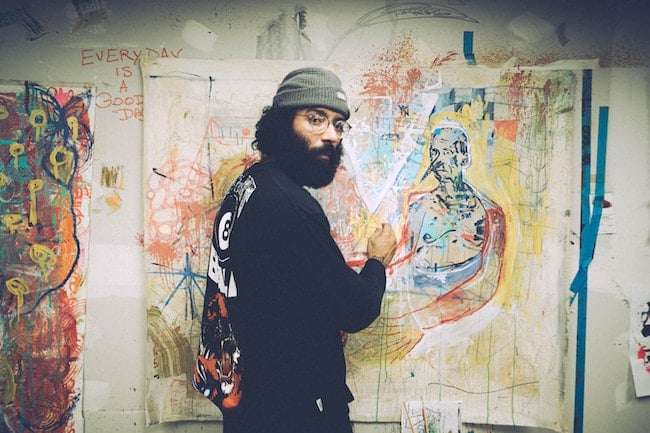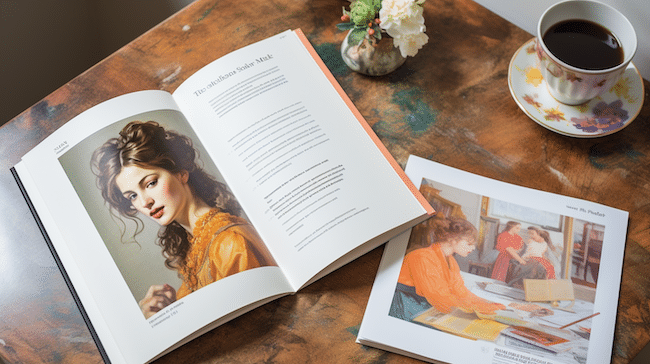Welcome back to our series on building an effective online presence for artists. As we’ve explored in our previous articles on artist branding and creating a digital art portfolio, your online presence is a crucial tool in your artistic career. Today, we’re focusing on a key component of this presence: your artist bio.
Think of your artist bio as more than just a career summary. It’s your handshake extended to the world, an invitation into your creative journey. It’s a snapshot of who you are as an artist, what drives your creativity, and what sets your work apart. But more than that, it’s a powerful tool to build trust and credibility with potential buyers, galleries, and fellow artists.
So, how can artists ensure that their bio doesn’t just list facts but also tells a compelling story? Let’s delve into the world of artist bios and discover how to make yours a trust-building, credibility-boosting tool. Let’s dive in!
The Power and Purpose of an Artist Bio
An artist bio encapsulates your artistic journey and communicates your unique vision to the world. It’s often the first point of contact between you and your audience, along with your artist statement. When visitors land on your online profile, your bio is likely the first thing they read and so you’ll want to make a strong first impression, captivate them with your story, and give context to your work.
More importantly, it is your vehicle for building trust and credibility. A well-crafted bio can showcase your professionalism, commitment to art, and unique artistic vision. It can highlight your achievements, your influences, and your artistic evolution, helping the reader discern your value, whether that value helps them decide on purchasing your art or hiring you for their next big project.
Let’s consider an example. Imagine you’re an artist who has spent years exploring the theme of nature’s resilience in the face of urban expansion. That might not easily come across from viewing only your work or even your artist statement. Your bio has greater detail where you can discuss the experiences that led you down that path.

The viewer can learn about when you were young, growing up near a forest that’s now a concrete jungle, and how that affected your psyche. You can explore how this transformation sparked your interest in the theme and how this concept isn’t just a phase but is endemic to your artistic creations.
A narrative like this does more than just share facts about your creative career. It connects with your audience emotionally, building trust and credibility in you as an artist.
The Essential Elements of an Artist Bio
Your artist bio can come in many forms. It can be a series of paragraphs that tell your story or it could be a resumé or CV that details highlights your creative history. In either case, you should consider including several of these essential elements.
- Introduction: Your opening statement is the most important part of the bio as it is the thing that will hook the reader into wanting to continue learning about your journey. If it isn’t engaging and intriguing, the reader is likely to move on to look at another artist. After all, in this online world, your profile is just a click away from another artist’s. While you can approach this initial glimpse of yourself in numerous ways, one of the more effective approaches is to start with a compelling statement about your artistic vision or philosophy. This could be a powerful quote, a brief description of your unique style, or a statement about what drives your creativity. It should also set the tone for the rest of your bio. Just be sure to keep it brief. You will have lots of opportunities to get into more specifics in the rest of your bio.
- Background and Education: Discuss your education, training, and any significant milestones in your career. Weave these facts into a story that reflects your journey. Don’t just discuss what you did or learned but how it impacted your career or vision. For instance, instead of simply stating that you studied fine arts at a particular university, you could talk about how your time there shaped your artistic style or introduced you to a medium you’re now passionate about.
- Artistic Influences and Themes: In this section, you share what drives your creativity. Discuss the themes you explore in your work and the influences shaping your artistic style. Your viewers may not be art critics or seasoned art professionals. They may not understand your work at first glance. Discussing your style and where it came from can help readers connect with your art on a deeper level.
For example, if your work is heavily influenced by nature, you could talk about your early experiences in the outdoors and how they sparked your love for natural themes. - Work History: In this section, you should detail your professional experience in the art world. This could include exhibitions, residencies, teaching positions, or significant projects shaping your career. Remember to focus on the experiences that have significantly contributed to your growth as an artist. You should also create portfolios that can be linked to these jobs and opportunities. Let people see what you created at that time in your life.
- Achievements and Recognition: This section highlights your accomplishments, such as awards and publications. It’s not about boasting; it’s about building credibility. Frame your achievements in a way that adds value to your story.
- Medium and Techniques: Discuss the mediums and techniques you use in your work. This gives readers insight into your creative process and the practical aspects of your art. If you’re a painter who uses unconventional materials in your work, you could share a story about how you discovered this unique approach.
- Current Work and Future Plans: Give readers an insight into what you’re currently working on and your future plans. This keeps your bio current and gives readers a reason to stay engaged with your work.
- Gallery Representation and Affiliations: If a gallery represents you or is part of an artist’s collective or association, mention it here. This adds credibility to your bio by showing that you are engaged in the art community.
- Press Mentions: If your work has been featured in the media, be it newspapers, art magazines, or online platforms, mention it here. This adds credibility and shows that your work is recognized and appreciated.
Remember, each section should be written in a way that tells a story, not just lists facts. Use a conversational tone and weave in personal anecdotes where appropriate to make your bio more engaging and relatable.

The Importance of Regularly Updating Your Artist Bio
As an artist, you’re constantly evolving—exploring new themes, experimenting with different techniques, and growing through various experiences. Your artist bio should mirror this evolution, accurately reflecting your current artistic journey. Regularly updating your bio ensures its relevance and signals to galleries, potential buyers, employers, and followers that you’re actively engaged in your career. It’s a subtle yet powerful way of demonstrating your commitment to your craft.
Here are some key aspects to consider when updating your bio:
- New Works and Projects: Updating your bio is crucial whenever you complete a new work or project. This could be a new series of artworks, a collaboration with another artist, or a public art project. But don’t just mention the new work—go a step further. Discuss the inspiration behind it, the techniques you used, and any new themes or ideas you explored. This gives readers insight into your creative process and shows them your art continually evolves.
- Exhibitions and Awards: Participating in an exhibition or winning an award are significant milestones in an artist’s career. They demonstrate recognition from the art community and should be highlighted in your bio. When discussing these achievements, provide some context—talk about the nature of the exhibition or award, the other artists involved, and what this recognition means to you on your artistic journey.
- Changes in Artistic Focus: Many artists evolve their styles or themes. If you’ve significantly shifted your artistic focus, your bio should reflect this. Discuss the reasons for the change, how it’s influenced your recent works, and its impact on your artistic perspective. This shows readers that you’re not static but are continually exploring and pushing your boundaries as an artist.
- Professional Development: Any form of professional development—be it attending a workshop, completing a residency, or gaining a new qualification—adds to your credibility as an artist and should be included in your bio. Discuss what you learned from these experiences and how they’ve contributed to your growth as an artist.
- Press and Publications: If your work has been featured in a magazine, blog, or other media, make sure to update your bio to include this. It’s a form of social proof showing your work is gaining attention and being discussed.
An outdated bio can give the impression of stagnation. Keeping your bio updated demonstrates your commitment to your artistic journey and your continual push for growth and exploration.

_____
It’s important to remember that your artist bio is more than just a summary of your career—it’s a dynamic narrative that tells your unique artistic story. While crafting an engaging artist bio may seem daunting, hopefully, with the insights and strategies we’ve discussed, you’re now equipped to create a bio that showcases your art and builds trust and credibility.
Remember, your artist bio is not just about you—it’s about your audience. It’s about giving them a reason to trust you, invest in your art, and follow your journey. It is a living document that should evolve with your art, reflecting your current focus, recent projects, and artistic vision.
Have you worked on your Artist Bio? If you have any suggestions that might help your fellow artists, leave them in the comments below.
